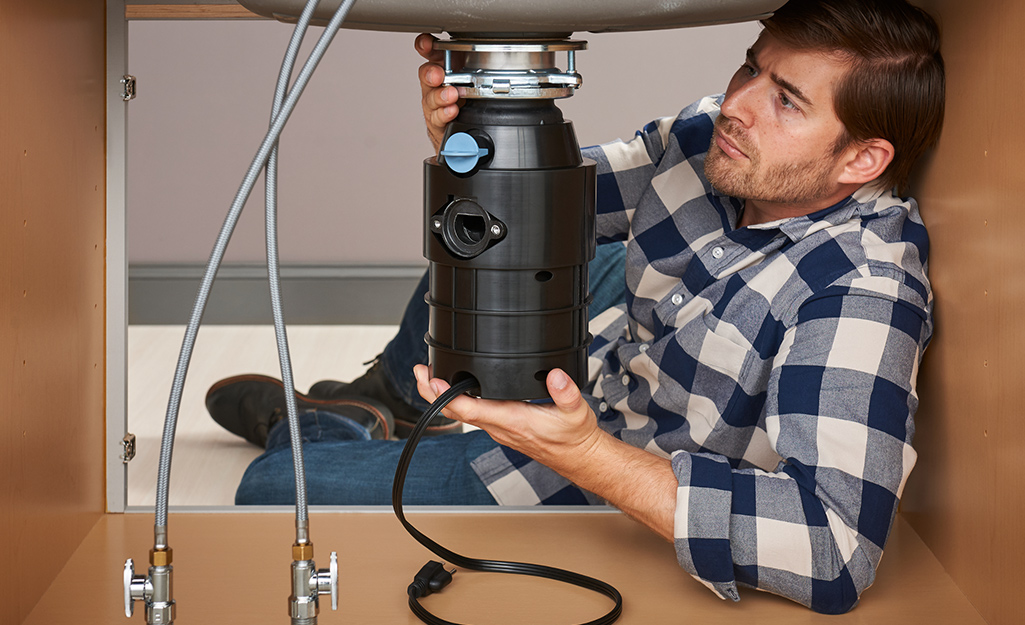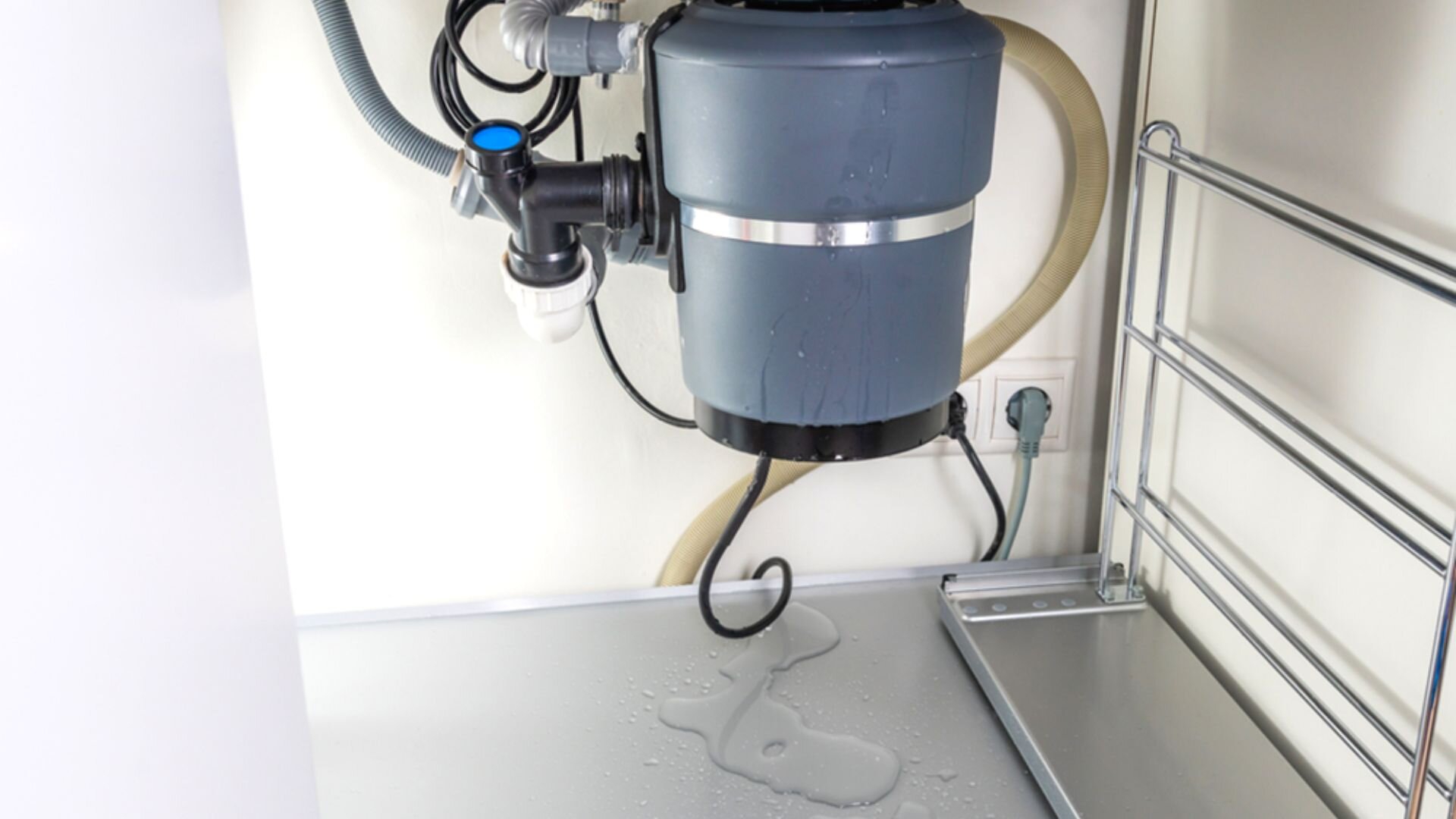Useful Methods for Fixing a Dripping Garbage Disposal
Useful Methods for Fixing a Dripping Garbage Disposal
Blog Article
We've noticed this article about Garbage Disposal Leaking From Bottom listed below on the internet and accepted it made sense to relate it with you here.

Garbage disposals are vital cooking area devices that help in throwing away food waste efficiently. Nevertheless, a leaking waste disposal unit can be an irritating and unpleasant issue to take care of. Luckily, lots of leaks can be repaired easily with a couple of simple actions. In this write-up, we will go over how to take care of a leaking garbage disposal effectively.
Introduction
Waste disposal unit are mounted under kitchen sinks and are made to shred food waste into smaller pieces, enabling it to travel through the pipes system conveniently. While these devices are typically trustworthy, leakages can take place with time because of deterioration, loose connections, or damage to the unit.
Typical Causes of Leaks in Garbage Disposals
Worn Seals and Gaskets
Seals and gaskets play an essential role in preventing water from dripping out of the garbage disposal. Over time, these components can deteriorate, leading to leakages around the disposal system.
Loose Links
The links between the waste disposal unit and the pipes system can become loose over time, causing water to leakage out during procedure.
Fractures or Openings in the Disposal Unit
Physical damages to the garbage disposal, such as cracks or openings in the housing, can additionally cause leaks.
Identifying the Resource of the Leak
Before attempting to fix a leaking garbage disposal, it is necessary to identify the source of the leakage. This can generally be done through aesthetic assessment or by carrying out easy tests.
Visual Examination
Check the garbage disposal device meticulously for any kind of indications of water leak. Pay very close attention to areas around seals, gaskets, and connection factors.
Examining for Leaks
One means to evaluate for leakages is by running water through the disposal system and checking for any kind of visible indications of leak.
Tools and Materials Needed for Fixing a Leaking Waste Disposal Unit
Prior to starting the repair process, gather the required tools and products, consisting of a screwdriver, adjustable wrench, plumbing technician's putty, substitute seals or gaskets, and epoxy or patching material for repairing cracks or openings.
Step-by-Step Overview to Repairing a Leaking Waste Disposal Unit
Shut off the Power
Before trying any fixings, make sure that the power to the garbage disposal device is shut off to prevent the danger of electric shock.
Find the Leak
Identify the precise location of the leakage and determine the cause.
Tighten Links
Make use of a wrench to tighten up any type of loose links between the disposal unit and the pipes system.
Replace Seals or Gaskets
If the leakage is because of used seals or gaskets, eliminate the old components and change them with new ones.
Patching Splits or Holes
For splits or holes in the disposal device, use epoxy or a suitable patching product to seal the damaged area.
Evaluating the Waste Disposal Unit After Fixing
As soon as the repair service is full, check the garbage disposal by running water through it to ensure that the leak has actually been solved.
Preventive Upkeep Tips to Prevent Future Leaks
To prevent future leakages, it is important to carry out regular upkeep on your waste disposal unit. This consists of keeping it tidy, staying clear of putting non-food items or difficult objects down the disposal, and occasionally looking for leakages or other concerns.
Conclusion
In conclusion, dealing with a leaking waste disposal unit is a fairly straightforward procedure that can be completed with fundamental tools and products. By adhering to the steps laid out in this short article and practicing preventative maintenance, you can maintain your garbage disposal in good working condition and prevent expensive fixings in the future.
What to Do About a Leaking Garbage Disposal
A leaking garbage disposal often goes unnoticed until you confront a sopping cabinet, a foul-smelling puddle, or an audible drip-drip-drip from the unit. The fix can be frustrating, too, because the leak can stem from a number of components in the system. Fortunately, with a little sleuthing, you can zero in on the leak and—depending on the exact location—stop the icky oozing and repair the component that caused it. Worst case scenario, if it turns out that the garbage disposal must be replaced, installing a new one is a reasonable do-it-yourself task for those with basic plumbing skills. Read on to keep the cash you’d otherwise hand over to a pro.
Prepare to find the leak
Prior to testing the garbage disposal for leaks, unplug it at the wall outlet and turn off the power from the breaker box to prevent electrical shock. Then insert a watertight sink stopper into your sink drain and wipe the unit dry with a clean cloth. In any handy container, mix a few drops of food coloring into a few cups of water, and pour the dyed water onto the sink stopper to help you locate the leak.
Investigate the source
the top, where the disposal meets the sink drain the side, where the dishwasher hose or main drain pipe connects to the disposal or the bottom of the unit Inspect each of these locations while gliding a light-colored rag over the unit; the dyed water will readily show on the rag and reveal the location of the leak. If a leak isn’t immediately apparent, remove the sink stopper and pour a few more cups of dyed water down the sink drain, then check for leaks again. Leaks near the top of the unit are more likely to show themselves while the sink is plugged, while side and bottom leaks are more noticeable while the sink is unplugged.
The metal sink flange that sits directly inside the sink drain is typically sealed around the top with plumber’s putty (a clay-like sealant) and then secured from under the sink with bolts. If the plumber’s putty deteriorates, or the bolts loosen, the flange can no longer form a watertight seal between the sink drain and the disposal—which could cause a leak at the top of the unit.
To reseal the leaky flange, you must first detach the garbage disposal. Start by loosening the screws securing the main drain pipe to the disposal, then loosen the screws in the metal clamp securing the dishwasher hose to the disposal and detach the drain pipe and dishwasher hose from the disposal. Loosen the screws in the mounting ring that connects the disposal to the metal mounting assembly beneath the sink, then pull down the disposal and carefully set it on a clean, dry surface. Loosen the bolts in the mounting assembly with a wrench, then pull down the mounting assembly and set it near the disposal.

I was made aware of that editorial on Tips on Fixing a Leaking Garbage Disposal through someone on another web property. Do you know another person who is intrigued by the topic? Please feel free to share it. Kudos for your time. Come back soon.
Phone Report this page